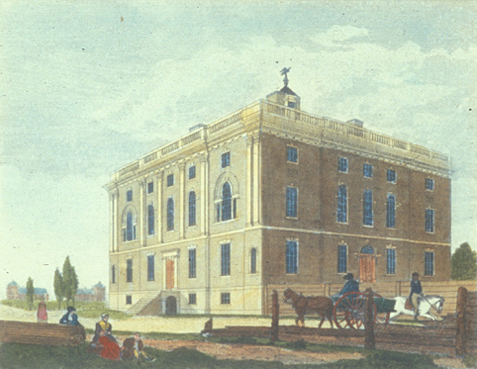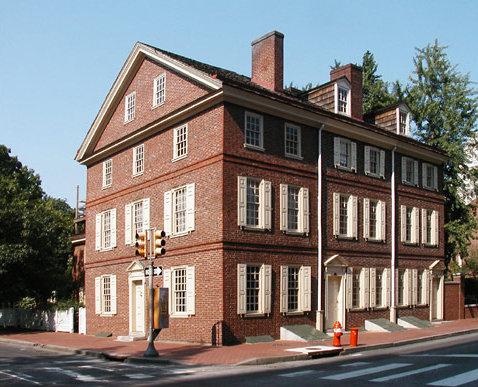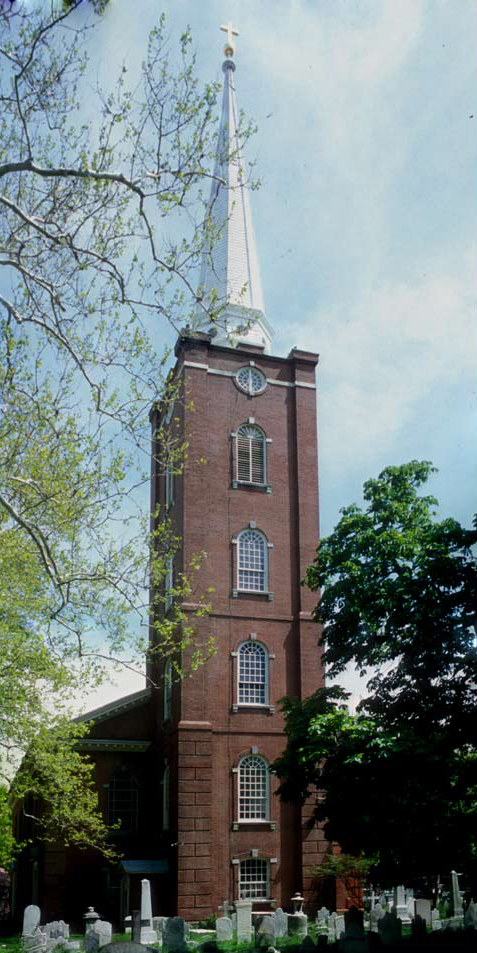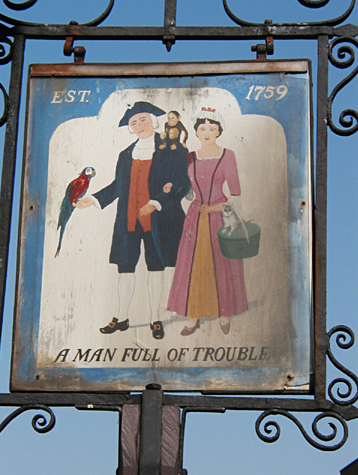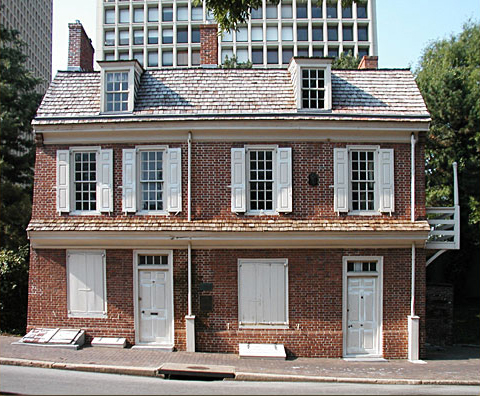Colonial Years
“House intended for the President, in Ninth Street”
William Birch
Courtesy Independence Hall National Historical Park, Karie Diethorn, Chief Curator, and with the kind assistance of library technician Andrea Ashby Leraris.[1]The prints in the INHP collection, which originated in various portfolio sets that preceded Birch’s book, The City of Philadelphia, in the State of Pennsylvania North America, as it appeared in … Continue reading
Begun by the Commonwealth of Pennsylvania in 1792 as a gift to the nation’s first President, the mansion was still under construction during Washington’s two terms, and his successor, John Adams, declined the honor. When Lewis reached Philadelphia in 1803 to begin preparations for the expedition, the mansion was occupied by the University of Pennsylvania, and it was here that he may have consulted with mathematician Robert Patterson. In the background are the Alms House and House of Employment.
—Joseph Mussulman
Europeans had been claiming ownership of North America for 200 years before Thomas Jefferson set in motion his first successful plan for exploring the West—the extent of time equal to that separating us from Lewis’s arrival in Philadelphia. After six or eight generations, whatever their national origins, the Europeans considered themselves no longer guests, but indigenous, perhaps even predestined, occupiers of the American continents. Perhaps the Lenni Lenape Indians, watching these trespassers coming up the Delaware River, or the Iroquois, watching others come up the St. Lawrence, at first had reason to greet them with forbearance, but that time soon passed. The visitors meant to stay.
There were good signs. The Englishmen who laid out Philadelphia in 1681 seemed inclined to establish a peaceful relationship with the native people. They called themselves friends. When other Europeans came to their city, even with language and religious differences, the Quakers did not turn them away. No forts or walls were built until 1747, when French privateers appeared in the lower Delaware. Then two batteries of cannon were arranged along the river and a volunteer defensive force was raised. The force was a proposal of the printer and scientist Benjamin Franklin; it was the beginning of his long involvement in civic affairs.
No one anticipated that the cannons shipped from England would be turned, ultimately, against soldiers from Britain. Certainly no trace of that turnabout appeared in the first lines of Franklin’s text for the cornerstone of Pennsylvania Hospital:
In the Year of Christ
MDCCLV [1755]
George the Second Happily Reigning
(For He Sought the Happiness of his People)
Philadelphia Flourishing
(For its Inhabitants were Public-Spirited)
Even then, Philadelphia was slipping from control of the Quakers. By the time of the Revolution not only their severe rules of conduct but they themselves were under attack. Paradoxically, the original hosts of the open city earned opprobrium and even a few cases of banishment. The public spirit had turned against pacifism and against a preference for continuing under the crown.
In the days of Revolution that followed, another ideal society was outlined by another temporary resident of the city. Like Penn, Jefferson described a community more inclusive than that with which he was comfortable. Both Penn and Jefferson ended their lives slaveholders, but by 1780 Pennsylvania and its chief city had a plan for emancipation, albeit at a funereal pace.
Post Revolution
At the turn of the 19th century a tavern was still more than merely a place to eat and drink. It was the nerve center of the community—a meeting room, convention hall, business forum, news center, gossip mill, hostelry, classroom and library—not to mention other more frivolous diversions such as dining, dancing, and concerts of various sorts. —J.M.
City Tavern was a “large commodious new House . . . intended to be kept as a genteel” establishment on the order of a tavern in London, England, when built in 1773 by subscription of wealthy residents. Opened just in time for the heady events of the next two decades, it was a place for entertainment, for argument and for celebration.
During the Revolutionary War, depending on which army was occupying Philadelphia, Loyalists or Rebels danced and sang in the spacious rooms of the tavern, or celebrated the departure of their enemies from the city. But by the middle of the Federal Period, when Washington lived in the President’s House on Market Street—and certainly by the time of Lewis’s visits—City Tavern was no longer Philadelphia’s “principal hostelry.” It had become the victim of poor management and was displaced by rivals. Its new name, the Merchant’s Coffee House, appropriately indicated its primary role as an exchange for maritime commerce, and implied a change to a more sober and sedate atmosphere. A fire partially destroyed the building in 1834.
Because structures deemed historic or venerable in our day were not necessarily recognized as such in the busy years of the nineteenth century, City Tavern was razed in 1854, ultimately to rise again as an exact reconstruction of the original in time for the bicentennial observance in 1976, thus experiencing a resurrection not accorded even the President’s House.
The Revolutionary war left the city, and many of its red brick and white trimmed houses, a shambles. Even the State House, the building in which the Declaration and later the new Constitution were debated and approved, was at first unfit for the convening of Congress in 1778. It had been used as a hospital by the British, and a large pit outside the building contained garbage and the bodies of horses and men.
Ten years later the streets were again festive. The celebration of the ratification of the Constitution began on the 4th of July in 1788: a cannon salute at sunrise, peals from Christ Church’s bells, the neighing and hoof-beats of horses—all preparing for a flag-bedecked procession of eighty-eight units of citizens of all occupations. One banner read “Peace o’er our land her olive wand extends.”
After nine years as the focus of political events, it was reasonable to expect that Philadelphia would continue to be so. For a number of reasons, cities, however well located or equipped to serve, were not favored for the permanent national capital, or for that matter (in the case of Philadelphia) the state capital. Even before Washington was welcomed once more to the city, this time as resident and as President, it was known that Philadelphia’s era as capital would last only a decade, through the terms of the first two Presidents. Some Philadelphians accused other Philadelphians of not trying hard enough to hold on. Indeed, there was perhaps a touch of weariness with the virulent exchanges that had come to characterize center stage in political life.
The city had known the devastation of war and occupation. Then in the 1790s, as in other American cities, yellow fever paid its disastrous visits. Philadelphia suffered an especially cruel epidemic in 1793.
At the start of the nineteenth century, for all that, there were no signs of flagging energies in any field. There were good reasons for sending Lewis there in 1803.
Lewis’s 1802 Arrival
In 1794 the recently widowed, 26-year-old Dolley Payne Todd (1768-1849) married James Madison, 43, the Congressional Representative from Virginia. In 1801, she and her new husband moved to Washington City, where he served as Secretary of State during Jefferson’s two terms. Famed for her social graces, she presided in her typically regal manner at the first inaugural ball in Washington when her husband followed Jefferson into the presidency.
—Joseph Mussulman
When Meriwether Lewis traveled to Philadelphia in 1802—a year before he came as the designated leader of an expedition to survey the farthest extent of the Missouri River—his guide to the city was Mahlon Dickerson.
Dickerson’s family had a long history of political activity in New Jersey. He had been an ardent supporter of the pro-Jefferson Democratic Society of Pennsylvania in the bitter Federalist-Republican disputes of the 1790s. By 1802, though he had moved his law practice from New Jersey only five years before, he was solicitor of the Common Council, a body elected by the “taxable inhabitants.” Perhaps his visibility had something to do with his success. He was six feet two inches tall, and in becoming familiar with the city, he loved to walk “all over town,” often late into the night.
Lewis’s visit to Philadelphia in 1802 seems to have been a consequence of meeting Dickerson at Jefferson’s table in Washington. The two young men (Dickerson the older by four years) were very frequently in each other’s company over Lewis’s twelve days in Philadelphia, and were so again in 1803 and in 1807. On their walks and rides, President Jefferson’s secretary was given a survey of people and places well beyond the privilege or opportunity of most Philadelphians of the time. Comparatively few citizens could have been familiar with the interior of Governor Thomas McKean‘s mansion on 3rd Street or of George Logan‘s Stenton six miles from the city. With Dickerson as companion, Lewis was soon no stranger to Philadelphia places and people.[2]An even greater familiarity could be claimed by Benjamin Rush in his autobiography: “nearly every street and alley in the city was visited by me every day. There are few old huts now standing … Continue reading
For obtaining that familiarity, Dickerson’s new home/office was ideally located, close to the buildings in which the government of the United States had formed and evolved. Around one corner was the de facto President’s House, successively occupied by Washington and Adams during Philadelphia’s most recent period as the national capital (1790-1800).[3]It was later converted to a hotel. Around another corner stood (and still stands) the State House (Independence Hall) and Congress Hall, though at Lewis’s visits no longer serving the functions their names implied. Somewhat incongruously, behind the State House loomed the front of the Walnut Street Prison, once notorious but by the first years of the nineteenth century a model of the new American penal system. There, ten years earlier than Lewis’s visits, another adventurer, the French balloonist Blanchard, making the first free flight in America, tested his heart rate for Benjamin Rush and brought back bottles of mile-high air for Caspar Wistar.
One of the destinations that the two friends came to favor was Center Square. The name referred to Penn’s original city-plan of four squares diagonally separated from one at the center. In 1803 Center Square was too far to the west to be considered the center of the populated area, but it was possible there to mingle with the ordinary people of the city admiring and circling Benjamin Latrobe’s “marble rotunda” of the Pump House. Today the Square is entirely covered by the huge Second Empire mass of City Hall, crowned by a statue of William Penn at the height and size that would have been startling to viewers accustomed to the Pump House.
Lewis’s Five Mentors
Construction of St. Peter’s began in 1758 to meet the growing size of the Anglican congregation at Christ Church. The reputation of Robert Smith, the carpenter-builder-architect[4]Sea captain John MacPherson’s house, Mount Pleasant; Franklin’s mansion off Market Street; Walnut Street Prison; and the east wing of the Pennsylvania Hospital. was already such that in building the church he had “access to the best workmen in the city and . . . sought each for his own specialty.” Construction was not completed until 1761, in good measure because of the difficulty of meeting its costs. The long-span roof truss at St. Peters, providing an interior free of columns, was typical of the eight churches Smith designed in Philadelphia.
Lewis’s visits to Governor Thomas McKean brought him diagonally across the intersection from the church. It did not yet have its four-story tower and steeple, nor the graves of men whose names would be linked with his. Nicholas Biddle was 17 years old in 1803. Charles Willson Peale had yet to paint the portraits of the two explorers, but he had started his museum when he lived just a block south of the church. Both Biddle and Peale are interred here.
Out of view to the right of the church, along Fourth Street, stand seven Osage orange trees grown from cuttings Lewis brought back from Pierre Chouteau‘s garden in St. Louis.
In 1803 Lewis had instructions from President Jefferson that required him to visit five members of the American Philosophical Society. He had already spent several weeks being tutored at Andrew Ellicott‘s home in Lancaster. Lewis’s first objective was to continue his instruction in celestial observation with Robert Patterson at the building to which the University of Pennsylvania had moved just the year before. It too had been called the President’s House in prospect that Philadelphia would become the permanent national capital, but Washington and Adams, who might have occupied it, chose not to do so.
Benjamin Rush and Caspar Wistar lived within a block of each other, Benjamin Smith Barton only a few blocks farther at Fifth Street, north of High (Market) Street. This proximity, and the fact that the three men were members of the same medical faculty, neither ensured nor required friendship. Rush and Barton had not been on speaking terms for at least ten years. The relationship between Wistar and Rush had cooled when Wistar, recovered from yellow fever in 1793, had rejected Rush’s therapies of purging and bleeding—as had many of Rush’s colleagues in the College of Physicians. There followed bitter disputes about whether the disease was imported or domestic, contagious or non-contagious, all in the absence of knowledge of cause. It was an age in which the words “microbe” and “asepsis” were unknown, let alone part of theory or practice.
Jefferson’s letters to Patterson and Ellicott explicitly asked that they instruct Lewis. On the other hand, the three physicians were simply to identify “those objects” to which it was “most desireable” that Lewis turn his attention. Only Rush admitted supplying medical advice. He might have considered that he had after all provided it to Jefferson personally, despite Jefferson’s known and perhaps selective skepticism regarding medical practice of the time.
Lewis’s letters provide little comment on his interviews with the physicians. It is not clear how much time he spent with each of them, how widely their conversation ranged, or what further communication Jefferson might have conveyed in oral instructions to Lewis.[5]For instance, the latest news about efforts to buy the Louisiana Territory, a matter significantly affecting the circumstances under which the Expedition would be approaching native peoples. Lewis … Continue reading
Recovery from Crisis
In 1803, Philadelphia and other American cities were emerging from a period of crisis. In the decade before, the city had experienced yellow fever epidemics that had emptied the city of those able to leave, and had left the federal government in hiatus, to say nothing of the deaths of the city’s inhabitants (10 percent of the population in 1793). In those years yellow fever scythed through the houses of the low and the high, young and old. It brought death to Benjamin Franklin Bache, Franklin’s grandson, to the husband and infant of Dolley Todd, to Samuel Powel the wealthy former Mayor, to Dr. James Hutchinson as he ministered to his patients, and to Benjamin Rush’s sister, Rebecca, as well as three of his pupils as they helped him minister to his. Although Philadelphia could reasonably lay claim to be America’s medical capital, Pennsylvania Hospital did not admit yellow-fever patients and in any case effective treatment was far form certain. It was not reassuring to a visitor that an epidemic, only relatively less severe than those earlier in the decade, had occurred in 1802.
Still, at the beginning of the nineteenth century Philadelphia, with a population of almost 70,000, was the largest American city, a seaport of “merchants, mariners and mechanics” about to burst its bounds to become the first American industrial metropolis.[6]Edward P. Richardson, “The Athens of America,” in Russell F. Weigley et al., ed., Philadelphia: A 300 Year History (New York: Norton, 1982), 208.
George Logan had reason to be satisfied in May 1803. He was one of Pennsylvania’s senators, and a member of a Senate committee that had approved Jefferson’s request for funds for a special project. The executor of the project would be welcomed once more to Logan’s Stenton. Jefferson was in the White House, not in what Philadelphians had hoped would be the Executive Manor on 9th Street but an unfinished building in Washington. The commercial and merchant forces that gentlemen farmers like Logan so distrusted were gone from the corridors of the national government. But what Logan might have considered the temple of the Hamiltonians, the Bank of the United States, was serving as the national government’s bank. Its demise and replacement—and the consequent designations First Bank and Second Bank—were decades off.
Political power had slipped from the Federalists much as it had slipped even earlier from the founding Society of Friends. The pacifism of orthodox Quakers had brought them opprobrium and harassment during the Revolution. Their religious tolerance on the other hand had brought—to southeastern Pennsylvania—neighbors of all religious persuasions and nationalities. The houses of worship of diverse religious communities appeared and reappeared throughout the city. St. Peter’s Church and especially Christ Church, though hardly matching the Quaker preference for plainness such as that of the Arch Street Meeting House then under construction at 4th Street, look today much as they looked in 1803.
Center of Science and Medicine
By 1803 Dock Creek, emptying into the Delaware, had been filled in and paved over except for the basin. Malodorous tanneries had been replaced by maritime businesses, but reputation probably had not benefited from memory that in this neighborhood occurred the first cases of the yellow fever epidemic of 1793. Still, absent knowledge of the role of mosquitoes in the disease nothing was done to destroy breeding places. Closeness to the water’s edge promised brisk business for a place like the “Man Full of Trouble Tavern.”
“Neither the best nor quite the worst of taverns,” Man Full of Trouble was older than City Tavern, its upscale neighbor a block away. Built about 1760, it was owned in 1803 by Marcha Smallwood who, like the owners of one-fifth of the taverns in Philadelphia, was a widow. Archaeological work in 1962 and the city records of her estate at death are consistent with an image of a rather humble tavern in which “beer or spirits . . . were poured from the kegs or spirit bottle . . . into leather cups, pewter mugs, or wooden vessels” (rather than into glass containers) while “the undoubtedly proper widow Smallwood, silver-rimmed spectacles glinting in the candlelight” bent over her apparently heirloom teapot.[7]Cotter, John L. et. al., The Buried Past: An Archaeological History of Philadelphia, (Chicago: University of Pennsylvania Press, 1992), 170. Her place may once have known lustier days when it was called “Man with a Load of Mischief,” and its sign showed a woman piggyback on the shoulders of a man, rather than on his arm.
The city had lost its central role in the federal government, but not in science and medicine. Jefferson remained president of the American Philosophical society long after he had ceased to be President of the United States. Philosophical Hall was now also the home of the College of Physicians.
Nor were artistic and cultural institutions faltering. Charles Willson Peale had just moved his museum from Philosophical Hall into the second floor of the State House next door; his son Rembrandt occupied the Assembly Room (where the Declaration was approved and signed) as a portrait studio. Though it had given up its role of de facto Library of Congress, the Library Company, also a one-time occupant of the State House, was now comfortably situated across the street in Library Hall. One of its proud possessions was the large scholarly library of George Logan’s grandfather James.
Despite Quaker disapproval of idle pleasures, the Chestnut Street Theater was presenting dramas, proudly distinguishing them from the equestrian exhibitions of Rickett’s Circus. An equestrian group rivaling Rickets would soon modify its program and its arena to become the Walnut Street Theater.
Wherever Dickerson and Lewis interrupted their walks and rides, perhaps at City Tavern or (less likely) at A Man Full of Trouble, they paid with coins produced at the first U.S. Mint at 7th Street. Denominations in cents and half-cents were probably sufficient for the tavern bills of the time. The salary of the director of the mint was $2000 per year, that of the Treasurer $1200. True, both Patterson and Rush, who filled those posts respectively, had other sources of income. Still . . . .
The portraitist Gilbert Stuart, the author of the famous epithet describing Federalist Philadelphia as the Athens of America, was preparing to move to Washington at the end of the year. His sitters had included the political and social elite of the city, temporary residents like George Washington and the Adamses, and permanent ones like Bishop William White.
Related Pages
Lewis’s Friends and Mentors
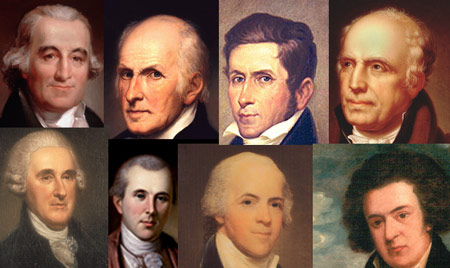

Thomas Jefferson not only brought Meriwether Lewis under his own tutelage, he made sure Lewis was trained and befriended the best minds of the day. Lewis appeared to be an eager and quick learner.
Historic Philadelphia
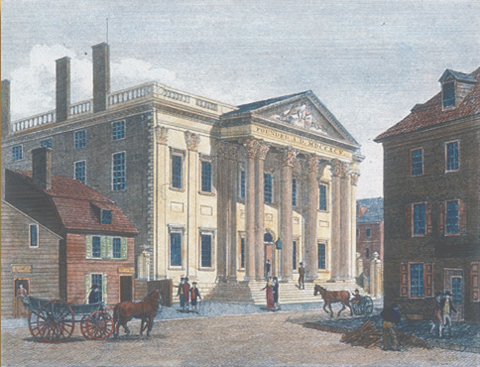

Philadelphia in 1803 was the intellectual, cultural, and financial center of the adolescent nation. Artist William Birch’s series of paintings from that era illustrate several key landmarks that Lewis would have visited. Text is provided by Philadelphian Charles Reed.
The Traveling Library
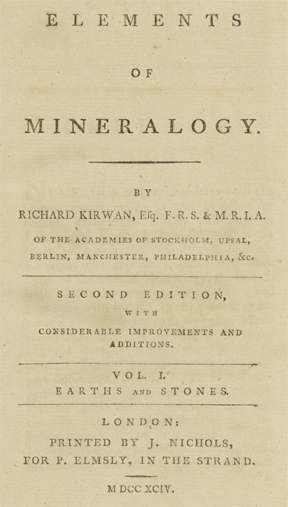

The captains assembled a collection of books, journal excerpts, and maps to use as references on the expedition often called “The Traveling Library.”
Outfitting the Expedition
Buying supplies in Philadelphia and St. Louis
by Frank Muhly, Joseph A. Mussulman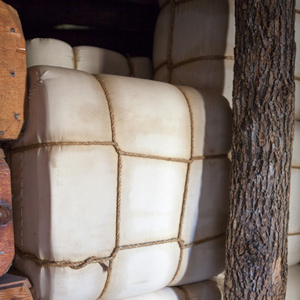

The original shopping list contained more than 180 items, including various “Mathematical Instruments”, arms and accouterments, ammunition, clothing, camp equipage, provisions, Indian presents, medicine, and packing materials.
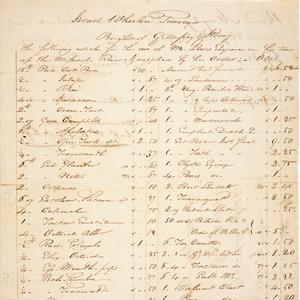

Prior to starting, Lewis ordered 29 botanical and chemical medicines plus some related equipment and supplies. The contents of Lewis’s list have much to tell us about the medical challenges he expected to face on his journey.
Notes
| ↑1 | The prints in the INHP collection, which originated in various portfolio sets that preceded Birch’s book, The City of Philadelphia, in the State of Pennsylvania North America, as it appeared in the Year 1800, measure approximately 18 by 14½ inches. |
|---|---|
| ↑2 | An even greater familiarity could be claimed by Benjamin Rush in his autobiography: “nearly every street and alley in the city was visited by me every day. There are few old huts now standing in the ancient parts of the city in which I have not attended sick people.” |
| ↑3 | It was later converted to a hotel. |
| ↑4 | Sea captain John MacPherson’s house, Mount Pleasant; Franklin’s mansion off Market Street; Walnut Street Prison; and the east wing of the Pennsylvania Hospital. |
| ↑5 | For instance, the latest news about efforts to buy the Louisiana Territory, a matter significantly affecting the circumstances under which the Expedition would be approaching native peoples. Lewis did reveal the effort being made in a letter to Clark. |
| ↑6 | Edward P. Richardson, “The Athens of America,” in Russell F. Weigley et al., ed., Philadelphia: A 300 Year History (New York: Norton, 1982), 208. |
| ↑7 | Cotter, John L. et. al., The Buried Past: An Archaeological History of Philadelphia, (Chicago: University of Pennsylvania Press, 1992), 170. |
Experience the Lewis and Clark Trail
The Lewis and Clark Trail Experience—our sister site at lewisandclark.travel—connects the world to people and places on the Lewis and Clark Trail.
Discover More
- The Lewis and Clark Expedition: Day by Day by Gary E. Moulton (University of Nebraska Press, 2018). The story in prose, 14 May 1804–23 September 1806.
- The Lewis and Clark Journals: An American Epic of Discovery (abridged) by Gary E. Moulton (University of Nebraska Press, 2003). Selected journal excerpts, 14 May 1804–23 September 1806.
- The Lewis and Clark Journals. by Gary E. Moulton (University of Nebraska Press, 1983–2001). The complete story in 13 volumes.
